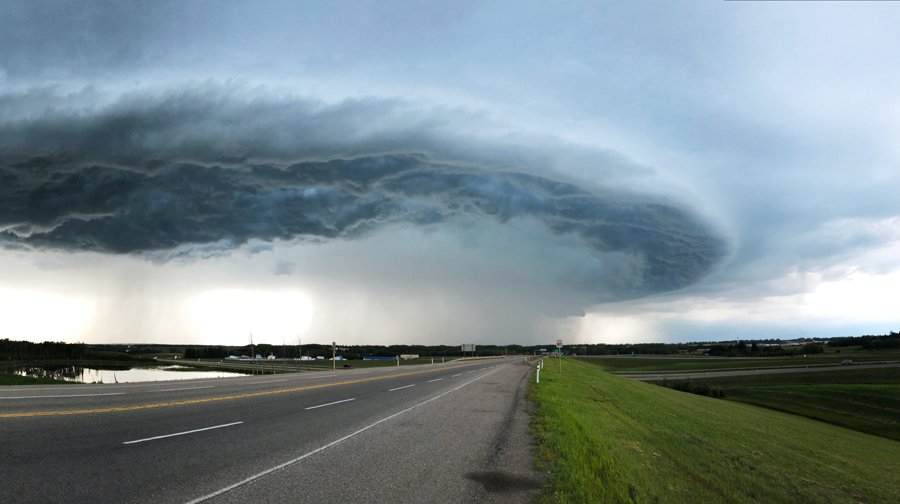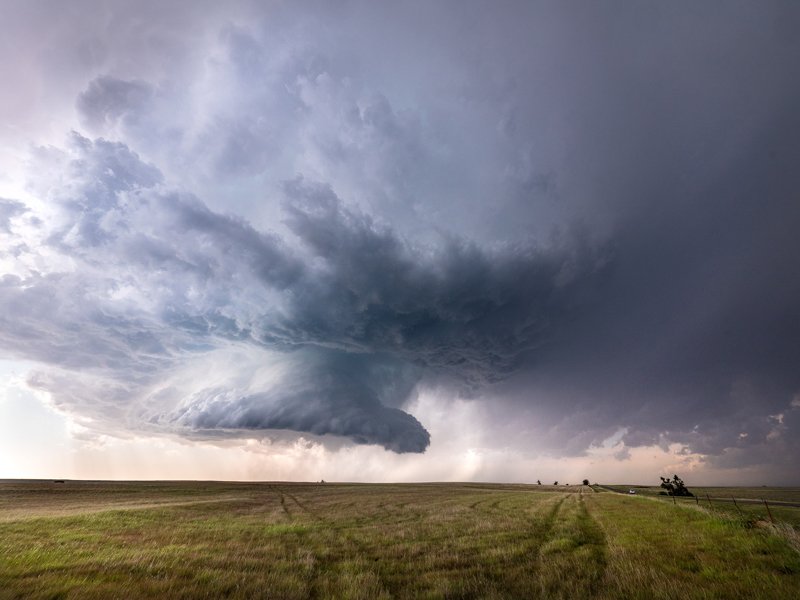Detour #62: Tornado Alley, USA
An F5 tornado leaves nothing behind but total devastation. Buildings are ripped from their foundations, trees are blown down and stripped of their bark, cars are sucked up and spat out over half a mile away by winds that deliver a 300mph death blow.
In America’s worst recorded tornado outbreak, 740 people died in seven twisters that struck Illinois, Missouri and Indiana on 18 March 1925. The death toll grows every year in the area of the US known as Tornado Alley.
In truth it is anything but an alley, cutting a huge swathe across the Mid-West from Texas to Montana and Colorado to Michigan. Each year dozens of twisters strike between March and June causing death and destruction on a massive scale.
Little is known about exactly how tornadoes form and how they will behave. One twister may destroy a whole town, whilst another may pluck a single building from the ground before moving on. Each season teams of meteorologists travel the country pursuing these storms to try to learn more about their violent nature and to give early warnings of impending disaster to people living in the danger zone.
But researchers aren’t the only ones racing after the weather. Since Hollywood glamorised storm chasing in Twister, a tourist industry sprung up – the Tornado Tour.
In 2000 I followed a group of tornado chasers through five states. Directed by weather reports and gut feeling we raced through Oklahoma, Texas, Kansas, Nebraska before finally encountering a super cell forming in South Dakota.
First, the sky darkened and it began to spot with rain. Then came the hail. Hail stones the size of grapefruit aren’t uncommon in these parts, but the ice falling from the sky was more pea sized. But there was a lot of it. At times the road looked almost snow-covered. The noise of the ice pounding on the roof and windshield was deafening and the wipers struggled to clear the windscreen.
We emerged from the storm to see what we’d just driven through – a monstrous Hiroshima-like mushroom cloud. The stalk was lit from within by sheet lightning, whilst forks fired from the mushroom’s cup. As we watched it moved slowly towards us, but there was no sign of the ominous rotation that could trigger a twister. Beautiful, but it could have quickly turned nasty.
We tracked the storm for hours, well into darkness when it became a spectacular firework display. The sky was lit with blinding flashes, forks streaking across the horizon, multiple lightning bolts, but eerily no thunder. All the right ingredients for a tornado seemed to be there and the radio warned residents to take cover: “This is a serious storm situation. If you are in an automobile, abandon your car and seek refuge in a basement, shelter or sturdy building. As a last resort seek shelter in a ditch or culvert and cover your head with your arms…”
The tornado hit overnight as we sheltered in a cheap motel, wind and rain lashing the windows.
In the morning light we could see the aftermath in the form of a mangled combine harvester and tree branches strewn over the roads. And this was just a small ‘touchdown’.
I left the convoy of storm chasers and headed back to Oklahoma City. For me this 2,000-mile roundtrip was a once-in-a-lifetime adventure, but for the residents of Tornado Alley, it’s just daily life.
Words Nik Berg Twitter | Instagram
Photography Nikolas Noonan / Randy Milanovic / Raychel Sanner / Romain Paget / Unsplash




